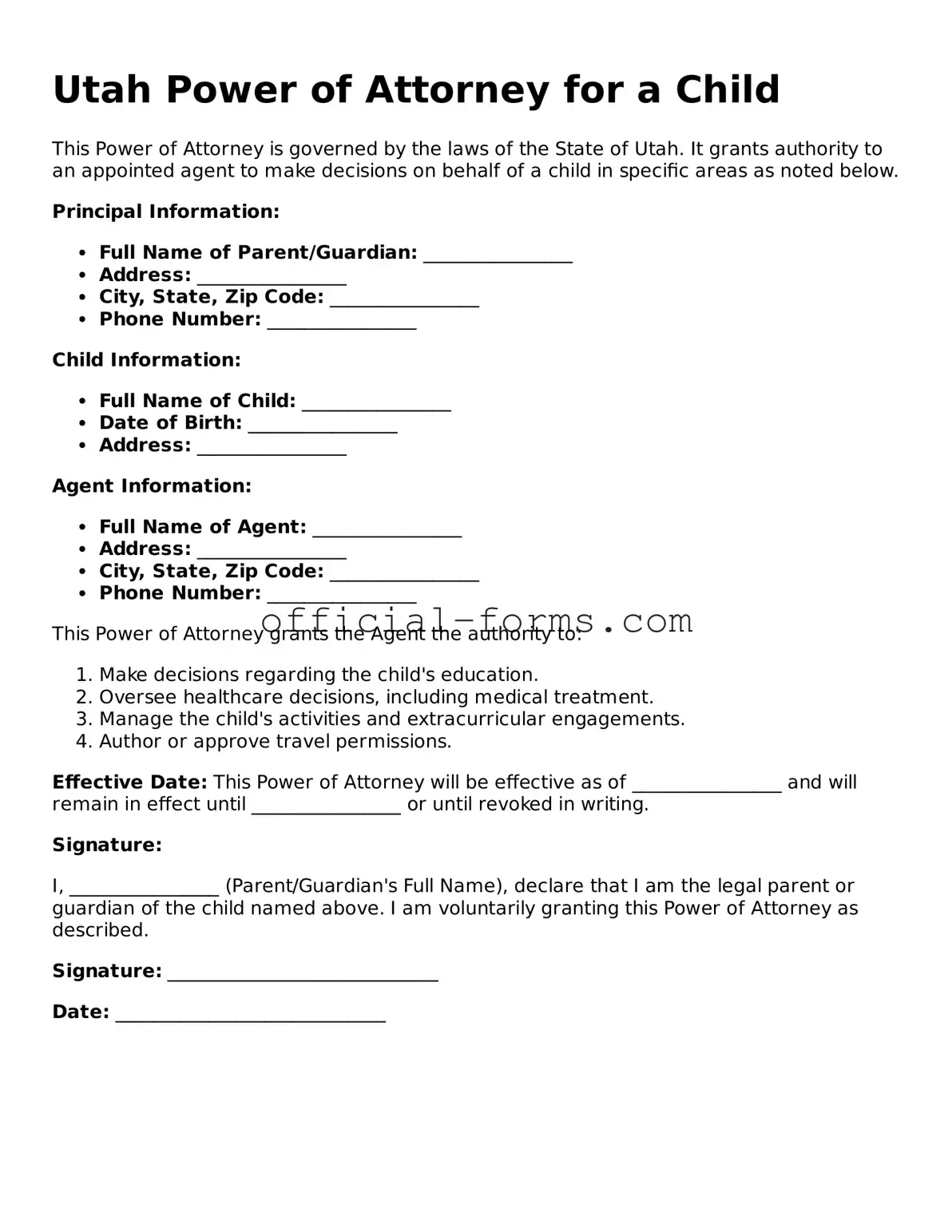Official Utah Power of Attorney for a Child Document
The Utah Power of Attorney for a Child form is a legal document that allows a parent or guardian to designate another individual to make decisions on behalf of a child. This form is particularly useful in situations where the parent is unavailable, ensuring that the child's needs are met promptly. Understanding the nuances of this document is essential for guardianship and child care arrangements in Utah.
Open My Power of Attorney for a Child Now
